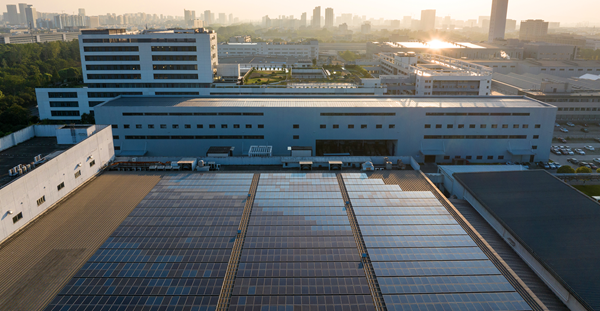The built environment is the most exciting sector to be working in today. I might be biased, but when it comes to tackling climate change, our industry is in a unique position to make a real difference. From the systems we put in place, to the infrastructure and buildings we create, the impact that our sector can have in cutting carbon emissions is huge. This is exactly why I joined Arcadis.
Tackling climate change will be the greatest challenge of our generation, and with COP26 accelerating the race to net zero, we simply can’t afford to sit on the side-lines.
Thinking big to lower carbon emissions
Ambition is valuable, but the fact is; we all need to start ‘walking the talk’. Building and construction alone are responsible for 39% of all carbon emissions in the world, while a quarter of emissions come from transport, such as road, rail and air. The Intergovernmental Panel on Climate Change’s (IPCC) 2021 report makes it crystal clear we’re not doing enough to avoid the catastrophic impacts from climate change.
These are big challenges to overcome, and let’s be honest – we all collectively need to do way more than we have. But we can accelerate the transition to net zero, if we act now.
Here at Arcadis, we know we have an opportunity to shift the dial. Our ambition is to accelerate the transition to net zero, in a way that improves quality of life for all. Put simply, this isn’t about getting to net zero at any cost. If we are to succeed in limiting global warming to just 1.5 degrees, it can’t be about creating a few renewable energy billionaires. It needs to be about making sure everyone has access to renewable energy, and lowering the cost for everyone.
To achieve this, sometimes we need to think outside the box. Making our energy supply more sustainable is a top priority, but occasionally we need to build consensus and convince people of the wider benefits of shifting to cleaner energy. Take onshore wind turbines. They’re key for sustainable energy development, but local communities can sometimes perceive them to be loud or a nuisance.
So, in the Netherlands we developed an interactive noise forecast app, which gives a local forecast for wind turbine noise that shows how loud the turbines are expected to be and how much electricity is generated by them. We found that residents are less likely to be disturbed by noise pollution if they know what to expect and can easily report any disruption. By putting the power back in the hands of locals it ultimately helped to create greater trust and mutual understanding on the need for cleaner sources of energy. Small steps build consensus and adoption...and snowball into big results.
Our ambition - to accelerate the transition to net zero in a way that improves quality of life for all - guides us in all that we do. We have been supporting our clients by providing pioneering solutions to protect, restore and improve our planet since 1888. More recently, we have set an ambitious target to be net zero within our global operations by 2035. Put simply, we want to get to the net zero target set by the Paris Agreement at COP21, but in half the time required. Our own strategy includes a commitment to sourcing 100% renewable electricity by the end of 2021, cutting flight emissions in half by 2025, and halving total company emissions by 2028. We are all entering unchartered waters, but these clear and important steps will guide us towards our own 2035 deadline.
Becoming a net zero business
Our commitment to reaching net zero by 2035 shouldn’t be unique. But it is still pretty rare. The problem is that a lot of organisations are stuck in strategy mode. Making a commitment is one thing, but there needs to be a plan – with targets and near-term deadlines – behind it. Otherwise, the plan will fail in its execution.
All businesses will need to become net zero in the future. That’s inevitable. But we should start moving up the learning curve and reaping the benefits now. Turning our entire economy net zero BEFORE 2050 – well now, that’s quite a feat. So we need to be really specific about what we have to do to reach this point.
We should be making sure every building we design and construct from now on is net-zero enabled, or every water system is water positive. And it can be done. We are currently working on the UK’s first carbon neutral bus station in Leicester which includes LED lighting, mechanical ventilation with heat recovery, air source heat pumps and 750 square metres of solar panels, which will generate enough energy to power the station and feed extra energy back into the grid.
If we think about the built environment, so much of our industry is highly skilled and locally based. If we flip the industry operating model to put emissions reduction at the heart of everything we do, the resulting job opportunities alone would be huge. This is THE decade of tremendous transformation, and our sector can truly lead the way. Any professional working in this industry has a once-in-a-lifetime opportunity to ‘build back better.’ By accelerating our transition to Net Zero, every willing engineer, designer, or construction worker has an opportunity to (quite literally) build the future they want to live in.
Developing sustainability strategies for all
By setting our own ambitious net zero commitments, we hope we’ll inspire by example. However, cutting our own carbon emissions is just one piece of the puzzle. At Arcadis, we know the biggest impact we can make is addressing and minimizing the footprint associated with the work we do for our clients. This could be a flood defence scheme in Limburg or Louisiana, or an energy transition project in Scotland or Sydney.
Developing holistic, comprehensive sustainability strategies that can be practically implemented NOW is crucial. By coupling our asset knowledge with our sustainability expertise, Arcadis is uniquely positioned to help our clients design these strategies, see the whole picture, and then plan and execute the next steps.
Today, our focus is on how we can standardize, scale and consistently implement pioneering solutions to make Net Zero a reality across the world. We need innovations in both materials and design. We need a net increase in biodiversity. So why don’t we – as a sector – make these aspects baseline requirements in every project we deliver?
Our 5-year partnership with High Speed 2 in the UK is an example of how much difference we can make when emissions reduction targets are embedded as a key part of project delivery. As the biggest construction project in Europe, one of the aims of HS2 is to reduce emissions as the line is being built. Working on the stretch of railway between London and Birmingham, our team of engineers are using their expertise to minimise carbon through the design, construction and operation of green tunnels and viaducts. The results are phenomenal – a 43% reduction in forecasted carbon emissions, and a net gain in new biodiversity areas along the line. The reduction in concrete alone will save over 200,000 tonnes of carbon.
Making net zero a reality
We know we need to act to tackle climate change. We knew it six years ago at the UN Climate Change Conference in Paris. That reality hasn’t changed, but maybe the public awareness and urgency has. Let’s make COP26 the year we commit to truly making a difference.
The professionals in our sector have the skills, knowledge and expertise to start implementing net zero solutions in our business operations, and at every stage of the built asset lifecycle. It’s going to be a learning curve for us all, but with the 1.5-degree target narrowing, we can’t afford to sit back anymore and wait. We need to make sure sustainability targets are embedded into every project, and that carbon reduction is central to every design. The time for talking is over. To my colleagues and peers, I am asking you - get out your pencils and start innovating. Be stubborn. Find a way to get us to a solution. Let’s go out there, and go fix it.
It’s time.






